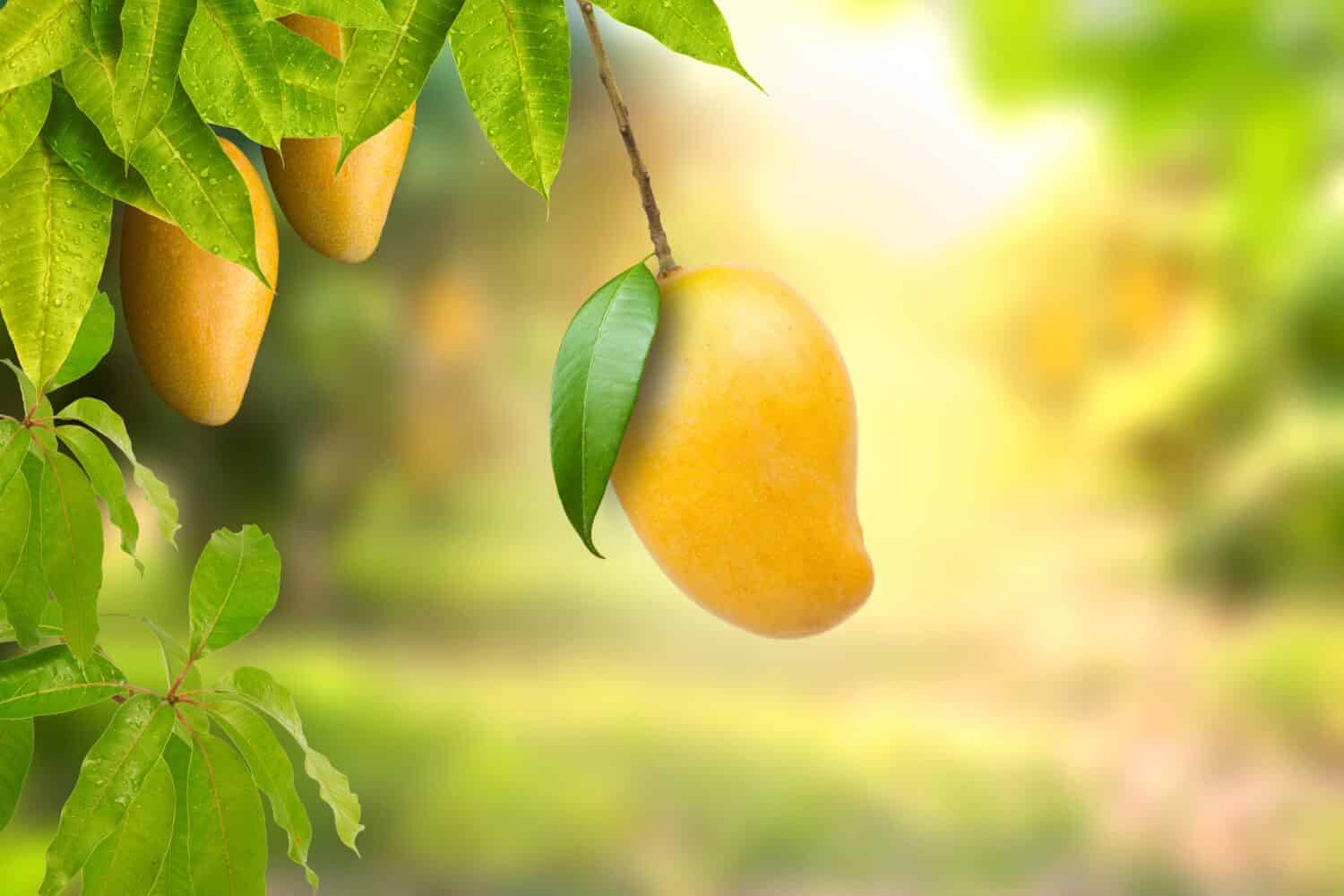Mangoes are a beloved fruit enjoyed by millions around the world. And those living in the United States are not immune from their charm. The good news is that these tropical delights grow well in several states and regions. Plus, many of those areas love to celebrate this amazing fruit whenever they can. From local festivals celebrating the fruit’s harvest to delightful eateries serving mouthwatering mango dishes, exploring mango season across the U.S. promises an exciting culinary journey.
Let’s dive into each state or growing region and uncover the peak season for this tasty fruit.

Mangoes come in a wide selection of shapes and flavors. Every growing region specializes in specific varieties.
©Sirmarkintosh/Shutterstock.com
Where Do Mangoes Grow?
Florida
Florida is the largest mango-producing state in the U.S. Some varieties grown in the southern state include ‘Glenn,’ ‘Haden,’ ‘Valencia Pride, and ‘Carrie. The growing season in Florida typically runs from late May to October, but the peak season is during summer.
If you’re in the Sunshine State during these months, you’re in for a treat. Many local festivals highlight the harvest, such as the annual International Mango Festival in Miami and MangoMania on Pine Island.
California
There is a thriving mango industry in California, but it is primarily concentrated in the southern regions. The peak season in the sunny state generally starts in mid-July and lasts through September. While not as dominant as Florida’s production, California’s mangoes are renowned for their unique flavors. You may encounter ‘Haden,’ ‘Ataulfo,’ ‘Kent,’ and ‘Glenn’ varieties.
The state boasts fun harvest festivals to celebrate the harvest, including The Mango Festival in San Francisco. Many restaurants in the area also add mango-themed dishes to their menus during the peak season.
Hawaii
The Hawaiian Islands are known for their picturesque landscapes, including exquisite mango orchards. The trees grow best under 1,200 feet in elevation. But there are some trees at higher elevations, so they aren’t necessarily a stickler for elevation. Hawaii’s peak season typically runs from May to October. Various varieties are cultivated across the islands, including ‘Harders, ”Ah Ping,’ ‘Gouveia,’ and ‘Fairchild.’
Residents and visitors can visit one of the many specialized festivals on the islands. These festive events help celebrate the abundant harvest and typically feature live music.
Other Growing Regions
Mango groves exist in many tropical and subtropical regions. You can find them in the West Indies, Southeast Asia, and Brazil. But they will grow successfully in USDA Hardiness Zones 9b to 11. So, if you live in one of those places, consider planting your own! Talk to your local nursery or garden center for more information about which varieties grow best in your area.

Mango groves exist in many tropical and subtropical regions but will grow successfully in USDA Hardiness Zones 9b to 11.
©Deyan Georgiev/Shutterstock.com
A Brief History of Mangoes
Mangoes have a rich history dating back over 5,000 years. They originated in South Asia. Ancient civilizations in China, India, Thailand, and Malaysia cultivated and enjoyed them. Over time, they spread across the world through trade and exploration.
Portuguese explorers introduced mangoes to Africa, while Spanish traders brought them to the Americas. The first recorded introduction of the exotic fruit to the United States was in 1833. Some scholars believe that the favored fruit arrived in Hawaii a little earlier. However, we don’t have a written record of that.
What Are the Health Benefits of Mangoes?
Mangoes are not only delicious but also packed with nutrients. They are an excellent source of vitamins A, K, and C, providing essential antioxidants that promote a healthy immune system and vision. The brightly colored flesh is due to the presence of beta-carotene, an important antioxidant. Mangoes also contain fiber, potassium, folate, choline, and magnesium. So, incorporating them into a diet is absolutely beneficial. You could almost consider them a superfood and add them to your grocery shopping plan accordingly.

Mangoes are highly nutritious and the perfect addition to any diet.
©Piyaset/Shutterstock.com
How Do You Eat Mangoes?
The possibilities here are nearly endless. How broad is your imagination? Don’t worry about trying to come up with the next big recipe hit, though. Start by enjoying this fruit in popular and traditional ways, and then branch out from there.
Of course, you can never go wrong with eating them fresh out of their peel. Or blend them in smoothies, add diced pieces to salads or yogurt, or make a traditional (and delicious) mango lassi. You can also make tasty baked goods or frozen treats, like sorbet and ice cream.
However, this lovely fruit isn’t just for sweet dishes. It also works surprisingly well in savory dishes. For a tangy twist, green mangoes are a popular choice in pickles and chutneys.
The photo featured at the top of this post is © SHOOTKART/Shutterstock.com
Thank you for reading! Have some feedback for us? Contact the AZ Animals editorial team.







